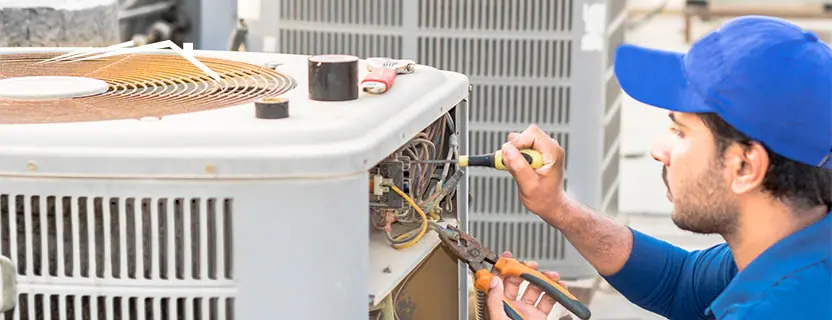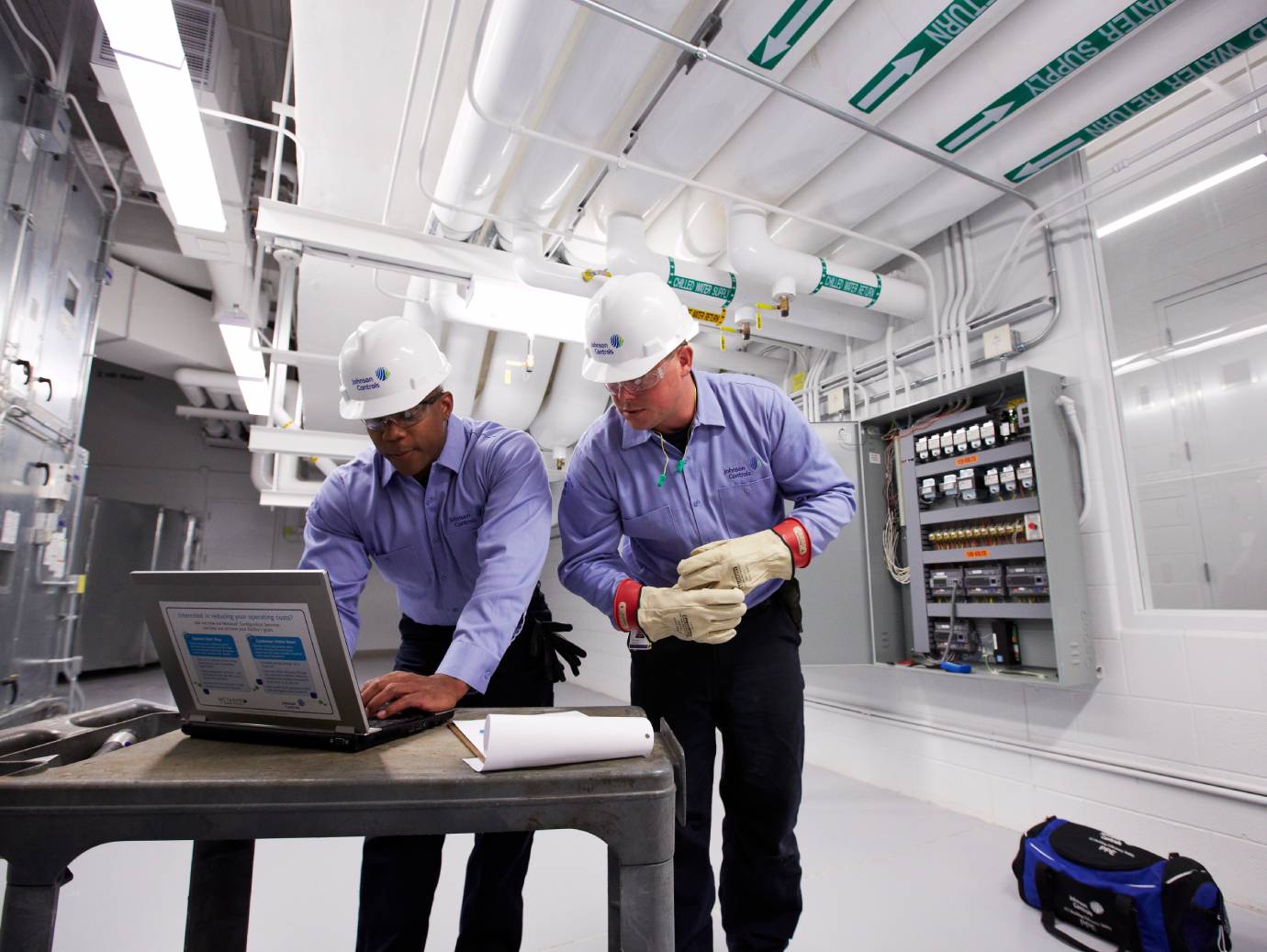Must-Know Details Before heat pump installation ooltewah tn
Must-Know Details Before heat pump installation ooltewah tn
Blog Article
Exactly How a Heatpump and Heater Interact to Enhance Your Home's Heating Efficiency
Comprehending exactly how a heat pump and heating system job together is essential for house owners seeking reliable heating options. Each system has its toughness, supplying a well balanced method to home comfort. The heatpump stands out in moderate temperature levels, while the heater provides fast heat during extreme cold. This synergy not only reduces energy prices but additionally boosts the life-span of both appliances. What factors influence this partnership, and how can homeowners optimize their advantages?
Understanding Heat Pumps: Exactly How They Function
Although several people may be not familiar with their internal functions, warmth pumps play a necessary role in modern-day heating systems. These gadgets operate by moving warmth from one location to an additional, using the concepts of thermodynamics. In chillier months, a heatpump extracts warm from the outside air, ground, or water, and transfers it inside to warm the home. On the other hand, throughout warmer months, it can reverse the procedure, serving as an air conditioner by getting rid of warmth from inside to the outside.Heat pumps contain an evaporator, condenser, growth, and compressor valve. The cooling agent within the system absorbs heat as it evaporates at reduced temperatures and stress. The compressor after that boosts the stress and temperature of the refrigerant, permitting it to release heat as it condenses. This effective procedure can substantially minimize energy usage contrasted to standard home heating methods, making heatpump a sustainable choice for environment control in homes.
The Function of Heaters in Home Heating
Heating systems play a crucial role in home heating by offering a dependable resource of heat throughout the chillier months. They operate by generating warm with burning or electric resistance, distributing it throughout the home by means of air ducts or glowing systems. The performance of a furnace is commonly gauged by its Annual Gas Usage Effectiveness (AFUE) rating, which indicates just how successfully the system transforms gas into heat.Furnaces can make use of different energy sources, including all-natural gas, gas, oil, or electrical power, allowing property owners to pick one of the most suitable alternative for their demands. Unlike heatpump, which may struggle in extreme chilly, furnaces keep constant efficiency, ensuring that indoor temperature levels continue to be comfy no matter outside conditions. In addition, modern heating systems typically come outfitted with sophisticated innovation, such as variable-speed blowers and wise thermostats, boosting their performance and responsiveness. This versatility makes heating systems a vital element in all-inclusive home heating methods.

Advantages of Making Use Of Both Solutions Together
Integrating the strengths of both heaters and heatpump can bring about an extra efficient and effective home heating service. Utilizing both systems allows home owners to take benefit of the heatpump's energy performance throughout milder temperatures while relying upon the heater for even more extreme cold problems. This double technique can greatly decrease energy prices, as heatpump eat less electricity than conventional heating approaches when temperature levels are moderate.Additionally, utilizing both systems together can improve comfort levels in the home. Heatpump can provide regular, even heating, while furnaces can swiftly increase ambient temperature levels when required. Moreover, the combination of both systems can prolong the lifespan of devices by lowering wear and tear on each system, as they share the workload. Ultimately, house owners can appreciate a balanced, affordable heating solution that changes effortlessly to differing weather conditions, ensuring a warm and welcoming home throughout the cold weather.
Just How Warmth Pumps and Furnaces Enhance Each Other
When home owners incorporate heatpump and furnaces, they develop a complementary home heating system that maximizes efficiency and comfort. Heatpump run by transferring warm from the outside air or ground, making them very efficient in moderate climates. They succeed during milder temperatures, supplying affordable home heating. On the other hand, heating systems produce warmth with combustion or electrical resistance, providing solid, immediate warmth during severe chilly conditions.The mix of these two systems allows for dynamic changes based on temperature level variations. Throughout warmer months or milder wintertime days, the heatpump can take the lead, preserving power and lowering costs. As temperature levels decrease, the heater can seamlessly involve, guaranteeing constant warmth throughout the home. This synergy not only optimizes energy usage however also enhances the life-span of both systems, as each device operates within its excellent efficiency array. With each other, they produce a well balanced atmosphere that adjusts to varying environment demands.
Enhancing Efficiency: Tips for Homeowners
House owners can improve their home heating efficiency through several practical methods. Establishing a routine maintenance routine, incorporating wise thermostat modern technology, and carrying out effective insulation and sealing services are essential steps. These actions not only enhance comfort yet likewise decrease energy prices.
Routine Maintenance Schedule
To ensure optimal home heating efficiency, establishing a regular upkeep routine is essential for any kind of home. Home owners should focus on routine evaluations of both heatpump and heating systems to identify peak performance. This includes altering air filters every one to three months, as blocked filters can considerably reduce efficiency. Furthermore, organizing expert maintenance at the very least yearly allows technicians to determine and deal with prospective issues before they escalate. Property owners should likewise cleanse the heatpump's outside unit to avoid debris accumulation that can prevent air flow. By sticking to a routine upkeep timetable, homeowners not only improve their heater' efficiency but additionally expand their life expectancy, leading to better convenience and lowered power prices throughout the chillier months.
Smart Thermostat Assimilation
Incorporating a smart thermostat right into a home heating unit can considerably improve power performance, particularly as it enables specific control over temperature settings. These devices can learn the property owner's routine and preferences, automatically changing the temperature to enhance comfort while reducing power usage. For example, they can decrease heating during times when the home is unoccupied, decreasing unnecessary usage. Many smart thermostats additionally give real-time energy use information, allowing house owners to make enlightened decisions about their heating routines. Additionally, remote accessibility by means of smart device apps enables users to change setups from anywhere, guaranteeing the home is cozy upon return. Generally, smart thermostat assimilation not only enhances convenience but considerably adds to energy savings and performance.
Insulation and Securing Solutions
Smart thermostats play an essential function in energy efficiency, however their effectiveness can be significantly improved by appropriate insulation and securing solutions. Home owners must prioritize shielding floorings, attic rooms, and walls to reduce warmth loss. Top notch insulation materials, such as click site spray foam or fiberglass, can greatly boost thermal resistance. Furthermore, sealing spaces around home windows, doors, and air ducts avoids cold air seepage and warmth getaway. Weatherstripping and caulking work approaches for dealing with these leaks - heat pump service. Regular evaluations for air leaks, in addition to the usage of blower door tests, can help identify issue areas. By investing in insulation and sealing, homeowners can maximize the performance of their furnace, inevitably resulting in minimized power intake and reduced energy expenses
Usual Myths Regarding Warmth Pumps and Furnaces
What false impressions border warm pumps and heaters? Numerous individuals mistakenly think that warm pumps are inadequate in cooler climates. Actually, modern-day heatpump are made to operate efficiently even in reduced temperature levels, giving reputable heating throughout winter season. Another common myth is that heating systems are always much more reliable than warmth pumps. Nevertheless, this depends upon the specific energy resources and performance scores of the devices concerned. Some might additionally assume that using both systems at the same time is unnecessary, however actually, this combination can optimize heating effectiveness, particularly during extreme weather problems. Additionally, individuals often think that heat pumps require consistent upkeep, when in truth, they have comparable maintenance needs to standard heater. By unmasking these misconceptions, homeowners can make more informed choices regarding their heating choices, ultimately bring about enhanced convenience and power effectiveness in their homes.
Maintenance Considerations for Combined Equipments

Regularly Asked Inquiries
Can Heat Pumps Work Effectively in Exceptionally Cold Climates?
Heatpump can battle in extremely chilly climates as a result of minimized efficiency and warmth extraction limitations. Improvements in modern technology have led to versions created for far better efficiency in such problems, enhancing their feasibility in extreme environments.
How Much Time Do Warmth Pumps and Furnaces Usually Last?
Heat pumps usually last 15 to twenty years, while heaters have a lifespan of 15 to thirty years. Normal upkeep can extend their long life, making certain reliable procedure and reducing the demand for early substitutes.

What Is the Typical Expense of Setting Up Both Systems?
The average price of mounting both a heatpump and a heating system normally ranges in between $5,000 to $10,000 - heat pump replacement ooltewah tn. Elements affecting this price consist of system dimension, installment complexity, and regional labor rates
Exist Tax Obligation Motivations for Using Energy-Efficient Heating Systems?
Many homeowners ask about tax motivations for energy-efficient heating unit. Different federal and state programs often offer credits or rebates, urging the adoption of lasting modern technologies to reduce power intake and promote environmental duty.
How Do I Choose the Right Size Heatpump and Furnace?
Selecting the best dimension warmth pump and heating system includes calculating the home's square video, considering insulation high quality, and evaluating regional climate. Consulting a specialist can guarantee perfect system performance and energy efficiency navigate here based upon particular needs. directory ductless mini splits. Understanding how a warmth pump and furnace job together is crucial for property owners looking for efficient heating options. In colder months, a heat pump removes warmth from the outdoors air, ground, or water, and transfers it inside your home to heat the living room. When home owners incorporate heat pumps and furnaces, they create a complementary heating system that makes the most of efficiency and convenience. Warm pumps run by transferring warmth from the outdoors air or ground, making them very reliable in moderate environments. Warmth pumps can have a hard time in extremely chilly climates due to decreased performance and warm extraction constraints
Report this page